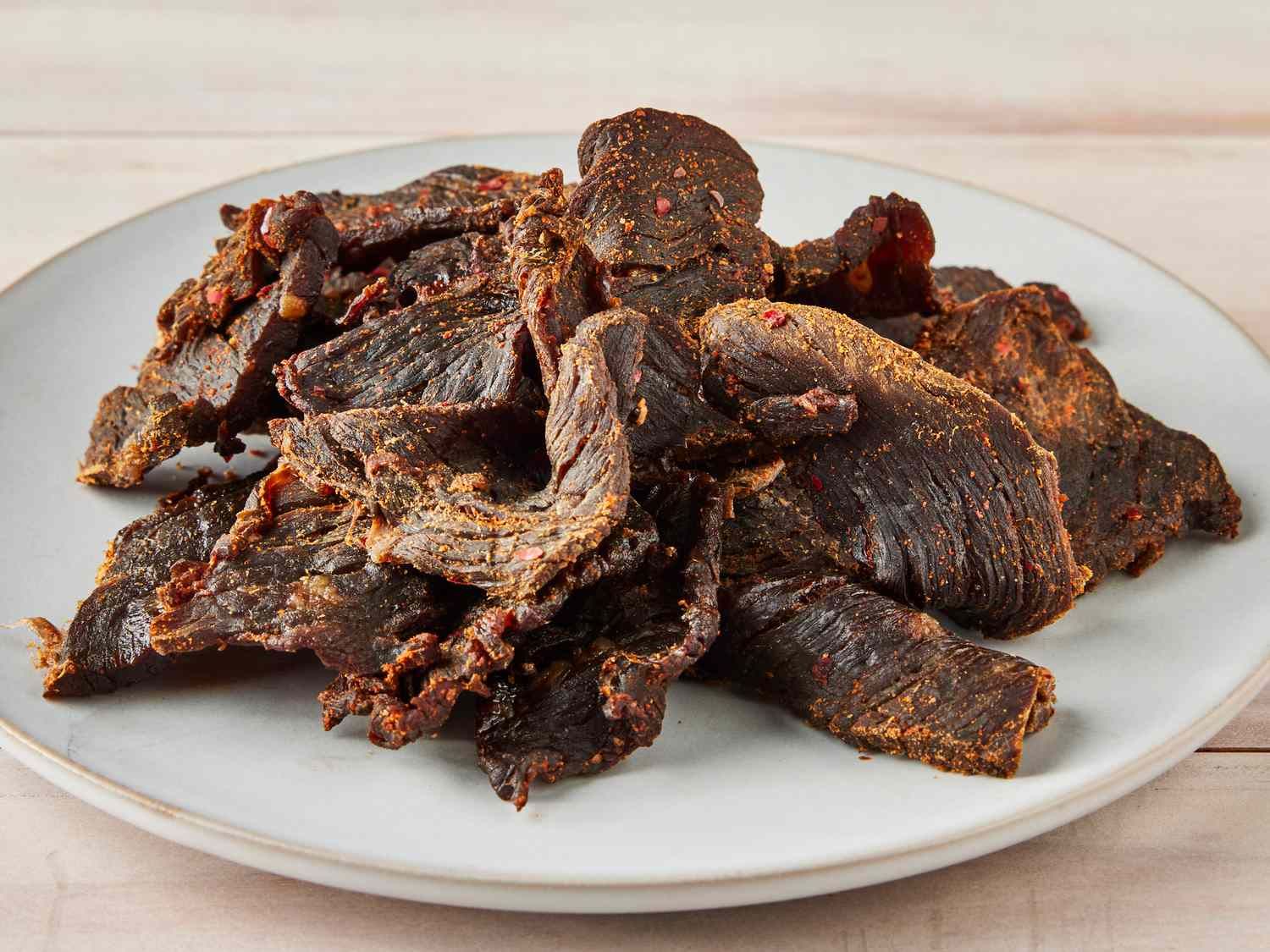

Articles
How To Store Beef Jerky
Modified: December 7, 2023
Learn the best methods and tips for storing beef jerky in this informative articles. Keep your jerky fresh and delicious for longer!
(Many of the links in this article redirect to a specific reviewed product. Your purchase of these products through affiliate links helps to generate commission for Storables.com, at no extra cost. Learn more)
Introduction
Beef jerky is a popular and delicious snack that is loved by many. Its savory and chewy texture makes it a great on-the-go snack or a protein-packed addition to meals. However, to ensure that your beef jerky stays fresh and flavorful for an extended period of time, proper storage is essential.
In this article, we will guide you through the process of storing beef jerky to maintain its quality and taste. By following these simple steps, you can prolong the shelf life of your beef jerky and enjoy it whenever you crave a satisfying and delicious snack.
Proper storage of beef jerky involves choosing the right packaging materials, ensuring a tight seal, finding an ideal storage location, maintaining optimal temperature and humidity levels, monitoring for spoilage, protecting it from moisture and light, and rotating and consuming it within recommended timeframes.
Let’s dive deeper into each step to learn how to store your beef jerky effectively and keep it fresh for as long as possible.
Key Takeaways:
- Properly storing beef jerky involves choosing the right packaging, sealing it tightly, finding an ideal storage location, monitoring for spoilage, and consuming it within recommended timeframes. These steps help maintain its freshness and flavor for longer enjoyment.
- Protecting beef jerky from moisture and light, rotating stock, and following FIFO method for consumption are essential. By maintaining optimal conditions and being mindful of quality, you can savor the rich flavors and satisfying texture of beef jerky for an extended period.
Read more: How To Store Homemade Beef Jerky
Step 1: Choose the Right Packaging Materials
The first step in proper beef jerky storage is selecting the right packaging materials. This is crucial to ensure that your beef jerky remains fresh and free from moisture. The two main options for packaging beef jerky are plastic bags and airtight containers.
If you choose to use plastic bags, opt for ones that are specifically designed for food storage. Look for bags that are made of thick, durable plastic that can withstand punctures and protect the jerky from air and moisture. Additionally, choose bags that have a zip-lock or airtight seal to provide an extra layer of protection and prevent any air or moisture from entering.
Airtight containers, such as glass jars or Tupperware, are another excellent option for storing beef jerky. These containers provide a solid barrier against air and moisture and can help preserve the freshness and flavor of the jerky. Make sure that the containers are clean and dry before storing the jerky to prevent any contamination or spoilage.
Regardless of which packaging material you choose, it is essential to ensure that it is completely sealed. Any gaps or openings can allow air and moisture to seep in, which can lead to spoilage. Inspect the packaging material for any defects or damages before use to guarantee a proper seal.
It is also worth mentioning that if you plan to store large quantities of beef jerky or extend its shelf life significantly, you may consider vacuum-sealing the jerky. Vacuum-sealing removes any air from the packaging, creating a tight seal that can prolong the freshness and quality of the beef jerky. However, this option may require a specific vacuum-sealing machine.
By choosing the right packaging materials and ensuring a tight seal, you can protect your beef jerky from air and moisture, two factors that can lead to spoilage and affect its texture and flavor.
Step 2: Properly Seal the Beef Jerky
Once you’ve chosen the appropriate packaging material for your beef jerky, the next step is to properly seal it. This step is crucial in preserving the freshness, flavor, and texture of the jerky.
If you’re using plastic bags, ensure that the bag is fully closed and that the zip-lock or airtight seal is securely fastened. Press out any excess air from the bag before sealing it to reduce the chances of oxidation and moisture buildup. You can also consider using a vacuum sealer if you have one available, as it creates an airtight seal that helps extend the shelf life even further.
For airtight containers, make sure that the lid or cover is tightly sealed. Check for any cracks or gaps in the container before storing the beef jerky. A faulty seal can allow air and moisture to enter, leading to spoilage and a decrease in quality.
Properly sealing the beef jerky not only prevents the entry of air and moisture but also helps maintain its texture and prevent it from drying out. A secure seal creates a barrier, protecting the jerky and ensuring it stays fresh and tasty for a longer period of time.
It’s also important to note that if you have homemade beef jerky and have used a marinade or seasoning, ensure that it is completely dried before sealing it. Moisture can lead to the growth of mold and bacteria, which can spoil the jerky. To check if your homemade jerky is adequately dried, it should be firm and break easily without bending.
By properly sealing your beef jerky, you can extend its shelf life, maintain its flavor and texture, and ensure that it remains a delightful snack or meal accompaniment for longer.
Step 3: Find the Ideal Storage Location
When it comes to storing beef jerky, finding the ideal storage location is key to preserving its quality and taste. The environment in which you store your jerky can greatly influence its shelf life and overall freshness. Here are some factors to consider when choosing the right storage location:
1. Temperature: Beef jerky should be stored in a cool environment to prevent spoilage. Ideally, the temperature should be between 50°F (10°C) and 70°F (21°C). Avoid storing it in areas that are subjected to extreme temperature fluctuations or direct sunlight, as this can lead to the growth of bacteria and mold.
2. Humidity: Moisture is the enemy of beef jerky, so it’s important to store it in a dry environment. High humidity can cause the jerky to become sticky or moldy. Aim for a humidity level of less than 50% to keep the jerky in optimal condition. Avoid storing it in areas like the kitchen or bathroom, which tend to have higher humidity levels.
3. Ventilation: Good air circulation is essential to prevent the accumulation of moisture or stale air around the jerky. Choose a storage location that has proper ventilation to maintain freshness.
4. Odor Control: Beef jerky has a distinct flavor and aroma, and it can absorb odors from its surroundings. To avoid any unwanted flavors, store it away from strong-smelling food items or cleaning agents.
5. Cleanliness: Ensure that the storage location is clean and free from dust, dirt, and pests. Jerky stored in a clean area is less likely to become contaminated and spoil prematurely.
Based on these factors, some ideal storage locations for beef jerky include a pantry, a cool and dry basement, or a cupboard away from direct sunlight. If you live in a particularly humid or hot climate, you may want to consider storing the jerky in the refrigerator, although this is not necessary in most cases.
By finding the ideal storage location for your beef jerky, you can maintain its flavor, texture, and quality for an extended period of time, ensuring that it is always ready for a delicious snack or meal.
Step 4: Maintain Optimal Temperature and Humidity Levels
Once you’ve found the ideal storage location for your beef jerky, it’s important to maintain optimal temperature and humidity levels to ensure its longevity and quality. Here are some guidelines to help you maintain the right conditions for your jerky:
1. Temperature Control: Keep the storage area at a consistent temperature between 50°F (10°C) and 70°F (21°C). Avoid areas with extreme temperature fluctuations, such as near ovens or windows. Fluctuating temperatures can cause moisture condensation, leading to potential spoilage or loss of flavor.
2. Humidity Management: Maintain a humidity level of less than 50% in the storage area. Excess humidity can cause the jerky to become moist, leading to mold growth or degradation of its texture. If the environment is too humid, consider using a dehumidifier or moisture-absorbing packets to help regulate the humidity.
3. Temperature Monitoring: Regularly check the temperature and humidity levels of the storage area using a thermometer and hygrometer. This will help you identify any fluctuations that may occur and allow you to take appropriate measures to maintain the optimal conditions for your beef jerky.
4. Avoid Freezing and Thawing: While refrigeration is not necessary for storing beef jerky, freezing can negatively affect the texture and flavor. The freezing and thawing processes can cause moisture to be released, resulting in a change in texture and potential degradation of taste. It is best to consume the jerky within the recommended timeframes instead of freezing it.
By maintaining the optimal temperature and humidity levels in your storage area, you can ensure the quality and taste of your beef jerky remain intact for longer periods. Controlling these factors will help prevent spoilage, mold growth, or any other negative effects that can diminish the enjoyment of your jerky.
Store beef jerky in an airtight container or resealable bag to prevent exposure to air and moisture. Keep it in a cool, dry place to maintain its freshness and flavor.
Read more: How To Store Beef Jerky Long Term
Step 5: Monitor for Spoilage
Regular monitoring is an essential step in ensuring the freshness and quality of your beef jerky. By actively checking for signs of spoilage, you can quickly identify any issues and take prompt action to prevent further deterioration. Here are some tips on how to monitor your beef jerky for spoilage:
1. Visual Inspection: Regularly examine the beef jerky for any visible signs of spoilage. Look for changes in color, texture, or the presence of mold, which can indicate that the jerky is no longer safe to consume. Discoloration, soft spots, or a slimy texture are all indications that the jerky has gone bad.
2. Smell Check: Pay attention to the aroma of the beef jerky. Spoiled jerky may have a sour or off-putting smell, indicating bacterial growth or degradation. If the jerky emits a foul odor, it is best to discard it to prevent any risk of foodborne illness.
3. Taste Test: If you have any doubts about the quality of your beef jerky, perform a taste test. While spoiled jerky may not always impart a strong or unpleasant taste, any unusual or off-flavors should alert you to its potential spoilage. If the taste seems off or unusual, it’s best to err on the side of caution and discard the jerky.
4. Expiration Dates: Pay attention to the expiration date or best-by date on commercially packaged beef jerky. While beef jerky can often remain safe to eat beyond these dates, they serve as a guideline for optimal freshness. If the jerky is past its expiration date and shows signs of spoilage, it is advisable to discard it.
Remember, beef jerky is a perishable food product, and while it has a longer shelf life compared to other meats, it can still spoil if not stored and monitored properly. Regularly inspecting the jerky for any signs of spoilage can help ensure the safety and enjoyment of your snack.
If at any point you are unsure about the freshness or safety of your beef jerky, it is always better to err on the side of caution and discard it rather than risking any potential health issues.
Step 6: Keep Away from Moisture and Light
Moisture and light are two factors that can significantly impact the quality and shelf life of beef jerky. To ensure that your jerky remains fresh and flavorful, it is important to protect it from exposure to excessive moisture and light. Here’s what you can do:
1. Moisture Protection: Keep your beef jerky away from areas with high humidity, such as the kitchen or bathroom. Moisture can lead to the growth of mold and bacteria, causing the jerky to spoil. Store the jerky in a dry environment with a humidity level of less than 50%. If necessary, use moisture-absorbing packets or desiccants in the storage container to help absorb excess moisture.
2. Airtight Packaging: Ensure that your beef jerky is stored in airtight packaging to prevent any moisture from seeping in. Use zip-lock bags or airtight containers that provide a secure seal. Proper packaging is essential in creating a barrier against moisture and preserving the freshness of the jerky.
3. Light Protection: Exposure to light, particularly sunlight, can cause the breakdown of certain nutrients in beef jerky and contribute to flavor degradation. Store your jerky in a dark or opaque container to shield it from light. Avoid placing it near windows or in areas where it will be exposed to direct sunlight. This will help preserve the flavor and quality of your jerky.
4. Flavored Packaging: Flavored jerky, such as those with spices or marinades, can be more sensitive to light and moisture. Consider using packaging specifically designed to protect the flavors, such as opaque or foil-lined bags. These types of packaging provide an additional layer of protection against moisture and light, helping to preserve the taste and aroma of your flavored beef jerky.
By keeping your beef jerky away from excessive moisture and light, you can extend its shelf life and maintain its flavor and texture. Proper protection from these elements is crucial in ensuring that your jerky remains a delicious and satisfying snack for an extended period of time.
Step 7: Rotate and Consume Within Recommended Timeframes
To ensure that your beef jerky remains at its best quality, it’s important to rotate your stock and consume it within the recommended timeframes. This step helps to maintain freshness and flavor, while also preventing the jerky from becoming stale or potentially spoiling. Here are some guidelines to follow:
1. FIFO Method: FIFO stands for “first in, first out.” When you purchase or make new batches of beef jerky, make sure to place them behind the older ones in your storage area. This way, you will consume the oldest jerky first, preventing it from staying in storage for too long and potentially losing its freshness.
2. Check Expiration Dates: Commercially packaged beef jerky often comes with an expiration date or a best-by date. Be mindful of these dates and make a note of them when storing new purchases. Consume the jerky before the expiration date to ensure the best quality and flavor. This will help you avoid consuming jerky that may have started to degrade in taste or texture.
3. Follow Storage Guidelines: Different types of beef jerky may have varying recommended timeframes for consumption. Some may suggest consuming within a few weeks, while others may last for several months. Pay attention to any storage guidelines provided by the manufacturer or recipe you used, and try to consume the jerky within the recommended timeframe to enjoy it at its best quality.
4. Regularly Assess Quality: Even before the indicated expiration date, it’s crucial to regularly assess the quality of your beef jerky. Visually inspect it for any signs of spoilage, such as discoloration, mold growth, or an off aroma. If you notice any undesirable changes, it’s best to discard the jerky to avoid any potential health risks.
By rotating your beef jerky stock and consuming it within the recommended timeframes, you can ensure that each batch is enjoyed at its peak freshness. This step allows you to savor the delicious flavors and textures of your jerky while minimizing the risk of consuming spoiled or subpar produce.
Remember, the quality of the beef jerky will gradually diminish over time, even when stored properly. So be mindful of the recommended timeframes and enjoy your jerky while it’s at its most delectable state!
Conclusion
Properly storing beef jerky is essential to maintain its quality, flavor, and texture for an extended period. By following the steps outlined in this article, you can ensure that your beef jerky remains fresh, delicious, and safe to consume.
Choosing the right packaging materials, such as airtight bags or containers, and properly sealing them are crucial steps to prevent the entry of air and moisture. Finding an ideal storage location with controlled temperature, humidity, and ventilation will help prolong the shelf life of your jerky.
It is important to monitor your beef jerky for any signs of spoilage, including visual inspections, smell checks, and taste tests. Pay attention to expiration dates and recommended timeframes for consumption, and practice the FIFO (first in, first out) method to ensure that older jerky is consumed first.
Protecting your beef jerky from excessive moisture and light is also vital. Moisture can lead to mold growth and texture degradation, while light exposure can contribute to flavor breakdown. By keeping your jerky in airtight and opaque packaging, you can safeguard it from these factors.
In conclusion, following these steps will help you store your beef jerky properly and enjoy it at its best. Remember to rotate your stock, consume the jerky within recommended timeframes, and stay vigilant about the quality of the jerky. By doing so, you can savor the rich flavors and satisfying texture of your beef jerky for longer, ensuring a delightful snacking experience every time.
So go ahead, stock up on your favorite beef jerky, and use these storage techniques to savor this delectable treat whenever you please!
Frequently Asked Questions about How To Store Beef Jerky
Was this page helpful?
At Storables.com, we guarantee accurate and reliable information. Our content, validated by Expert Board Contributors, is crafted following stringent Editorial Policies. We're committed to providing you with well-researched, expert-backed insights for all your informational needs.
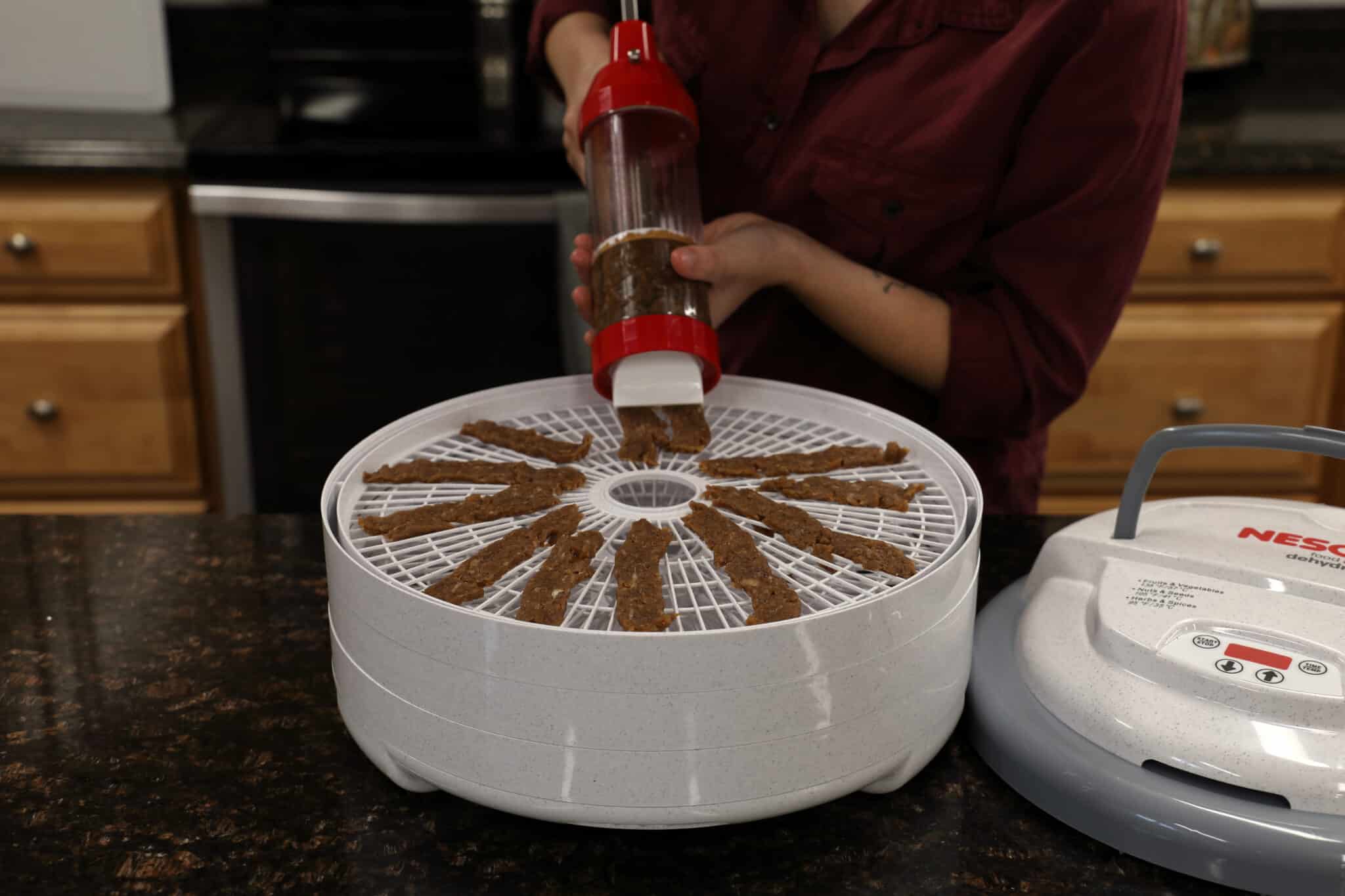
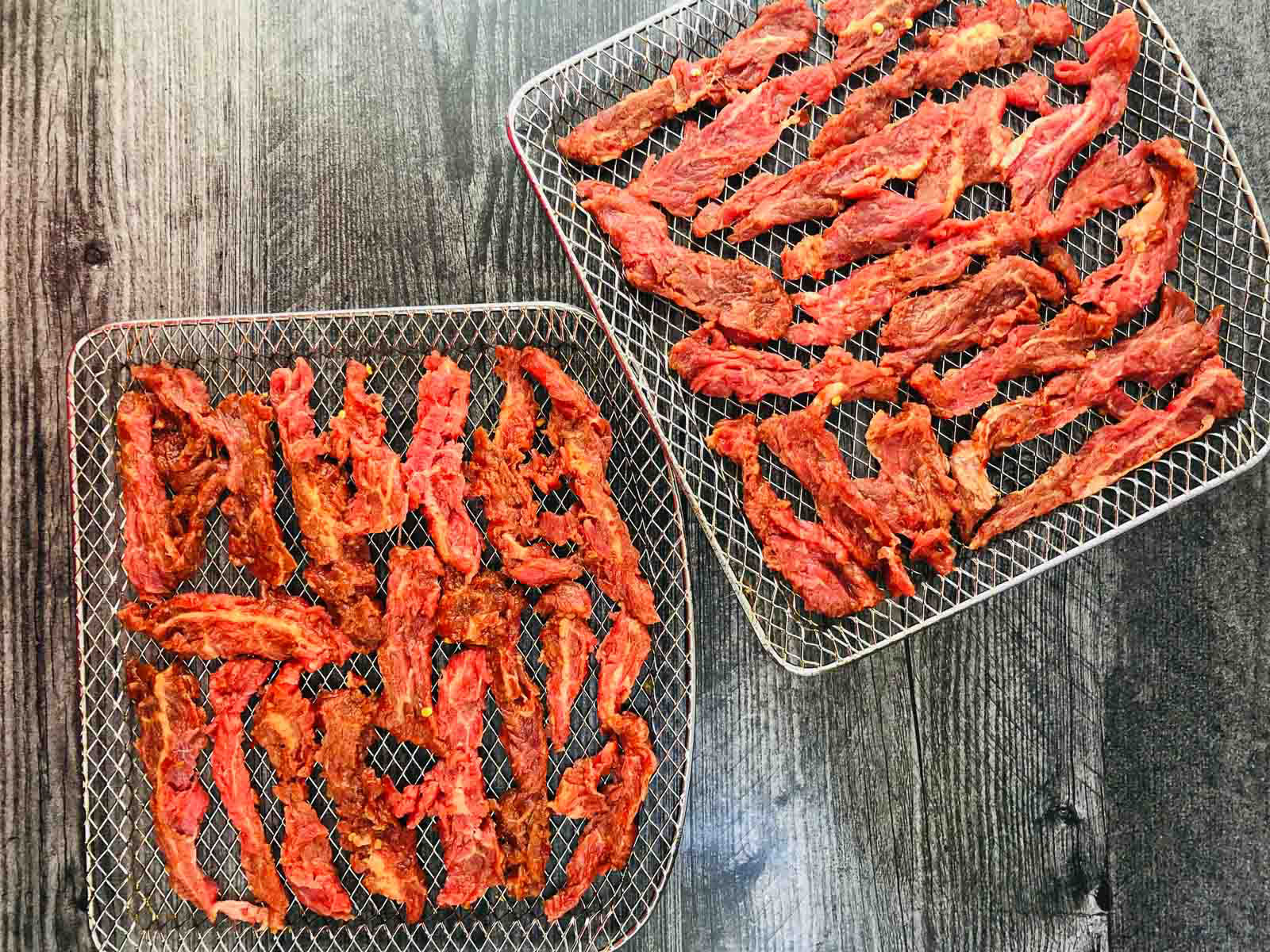
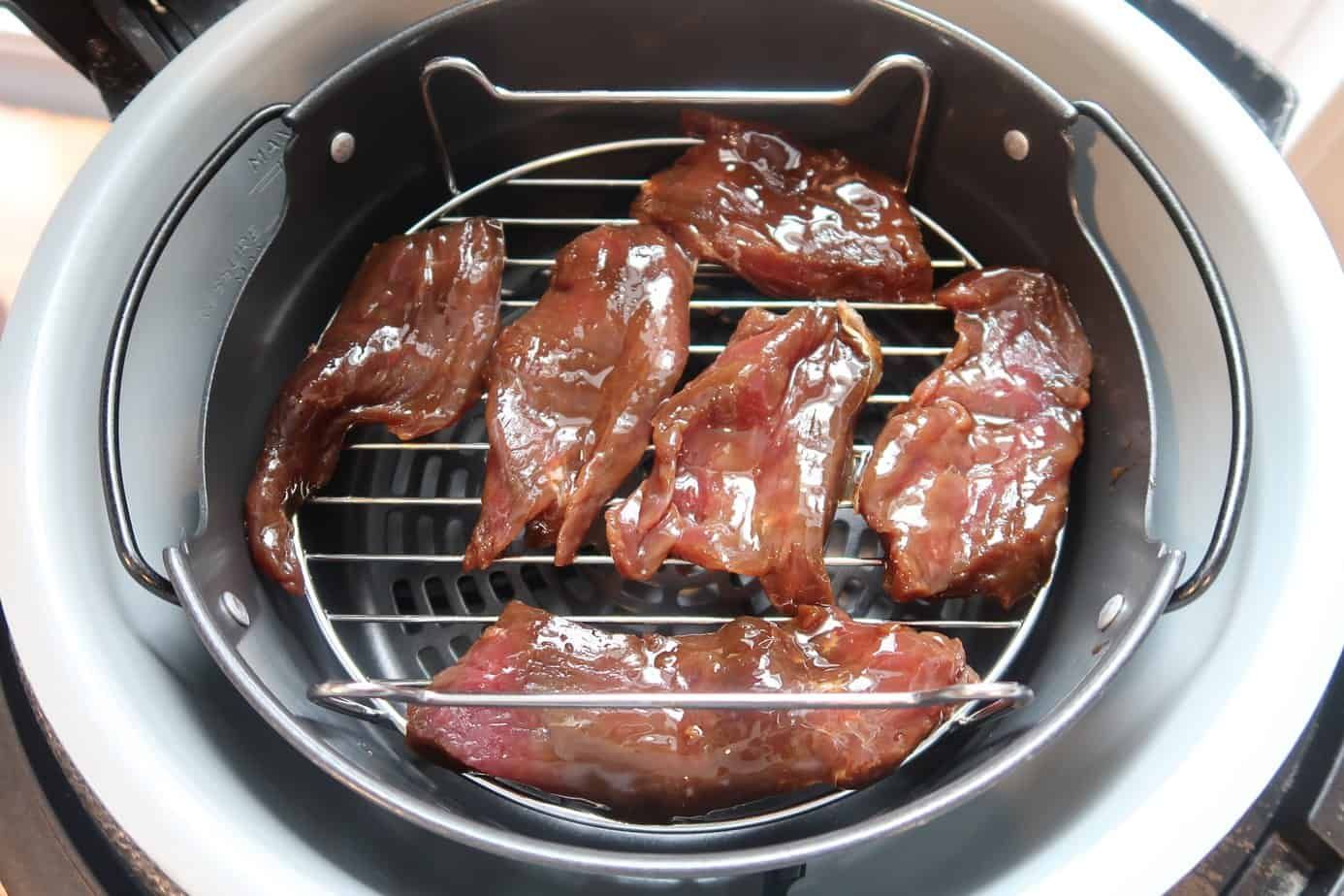
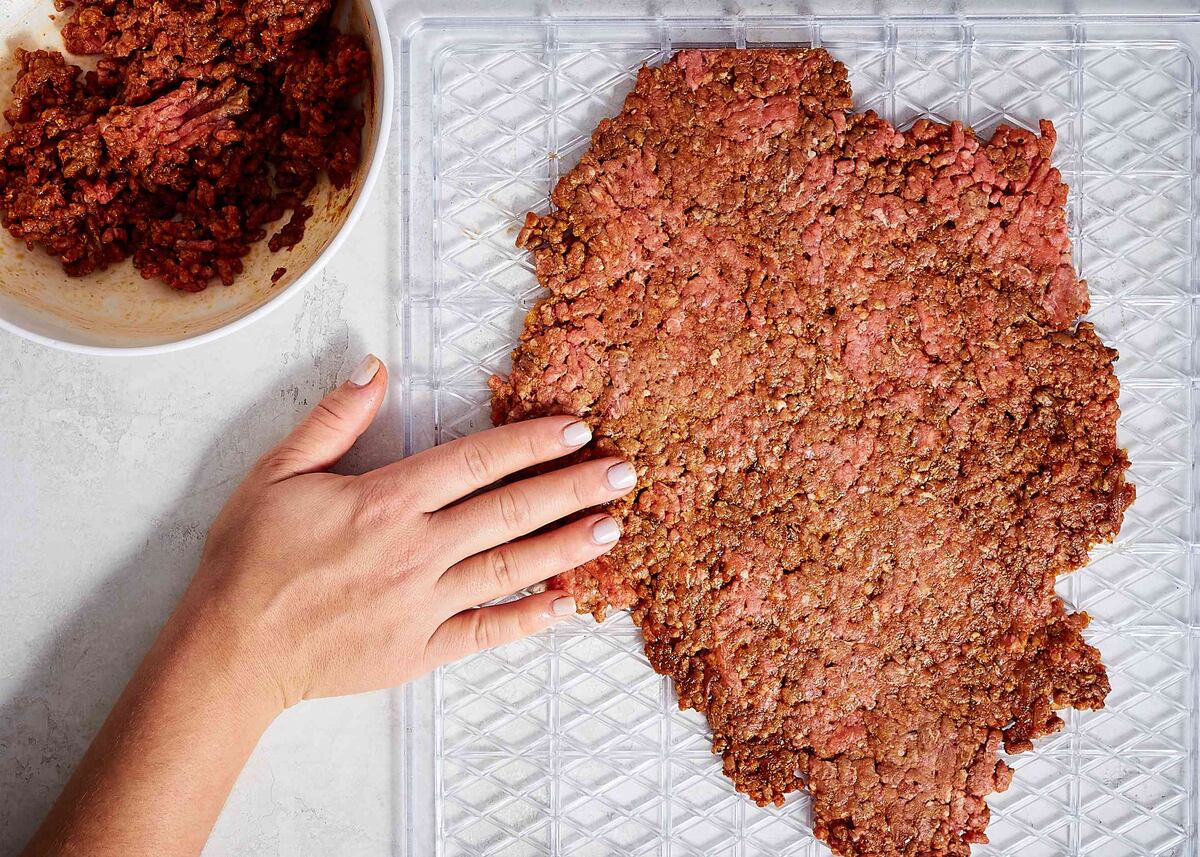
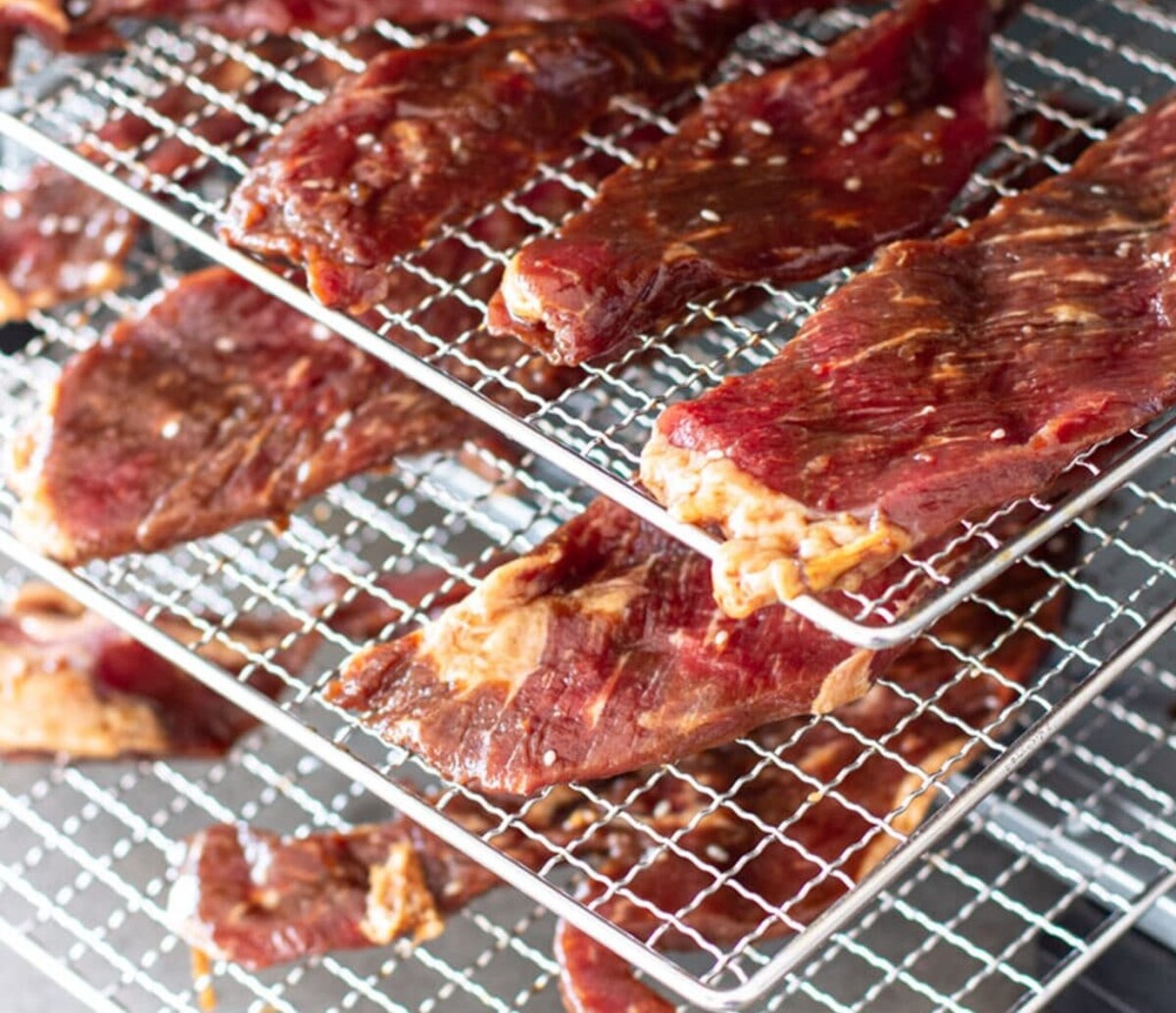
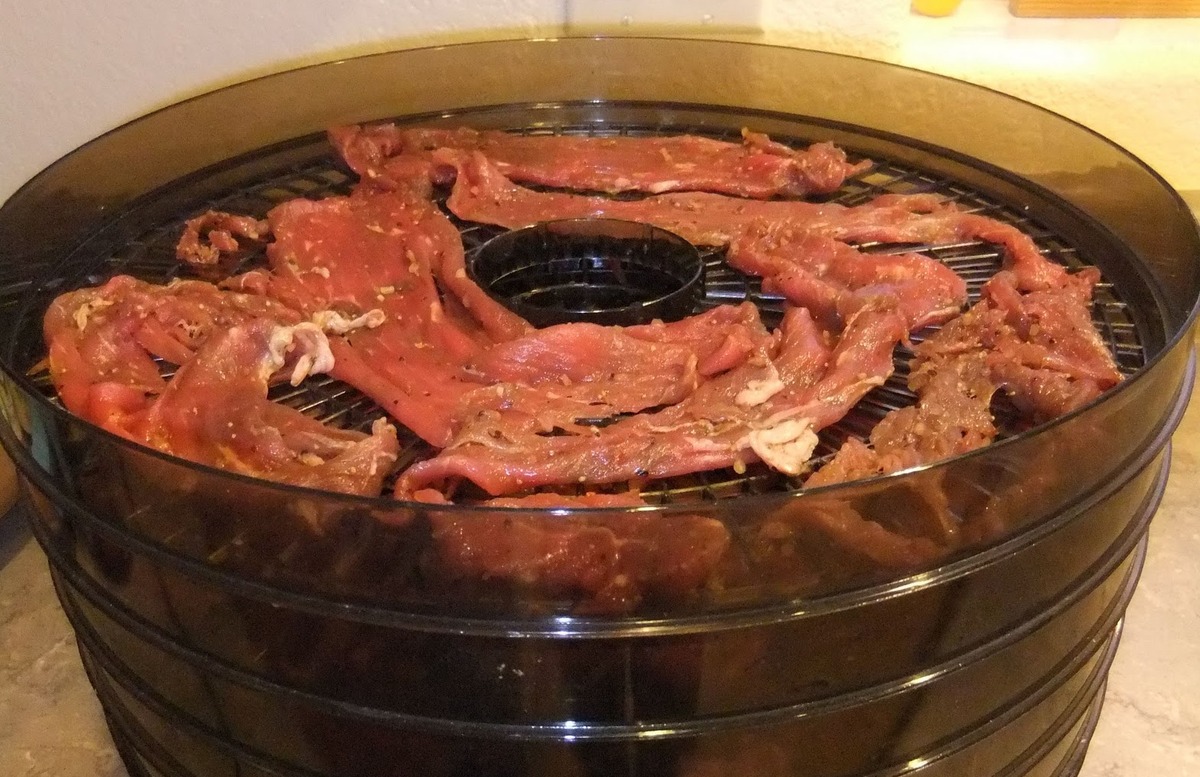
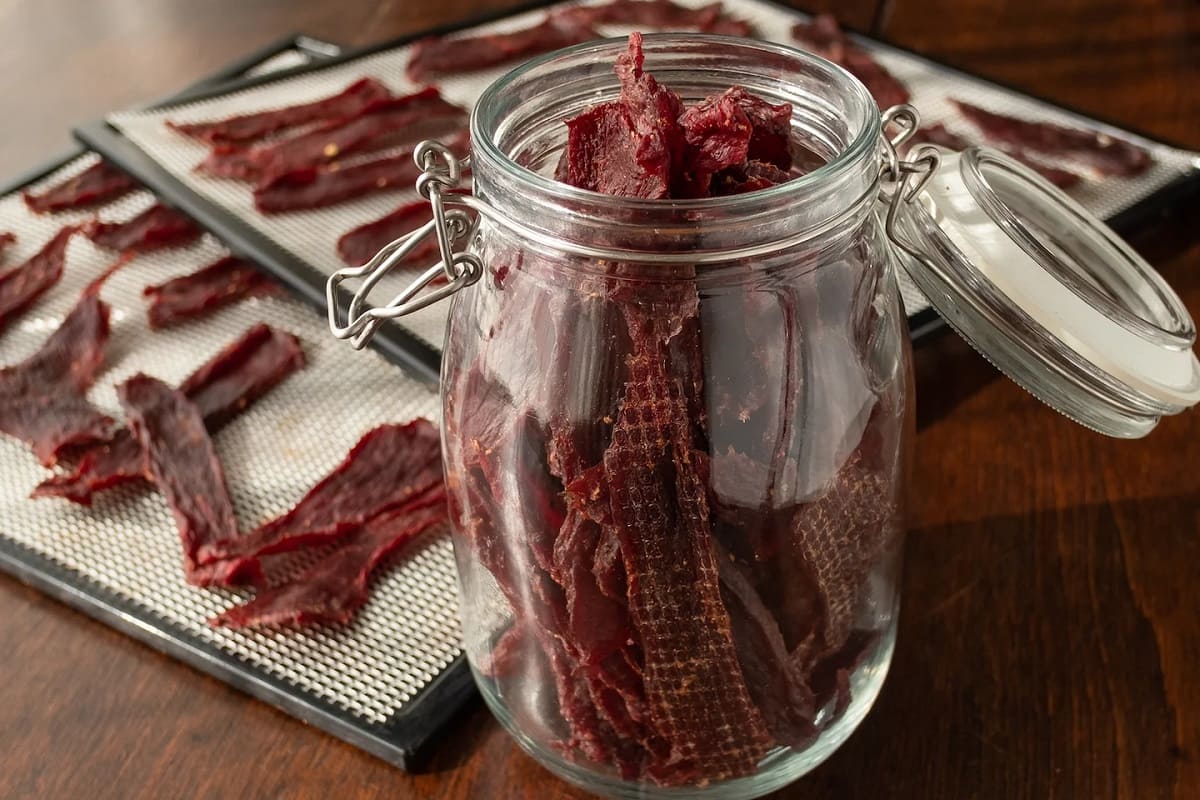

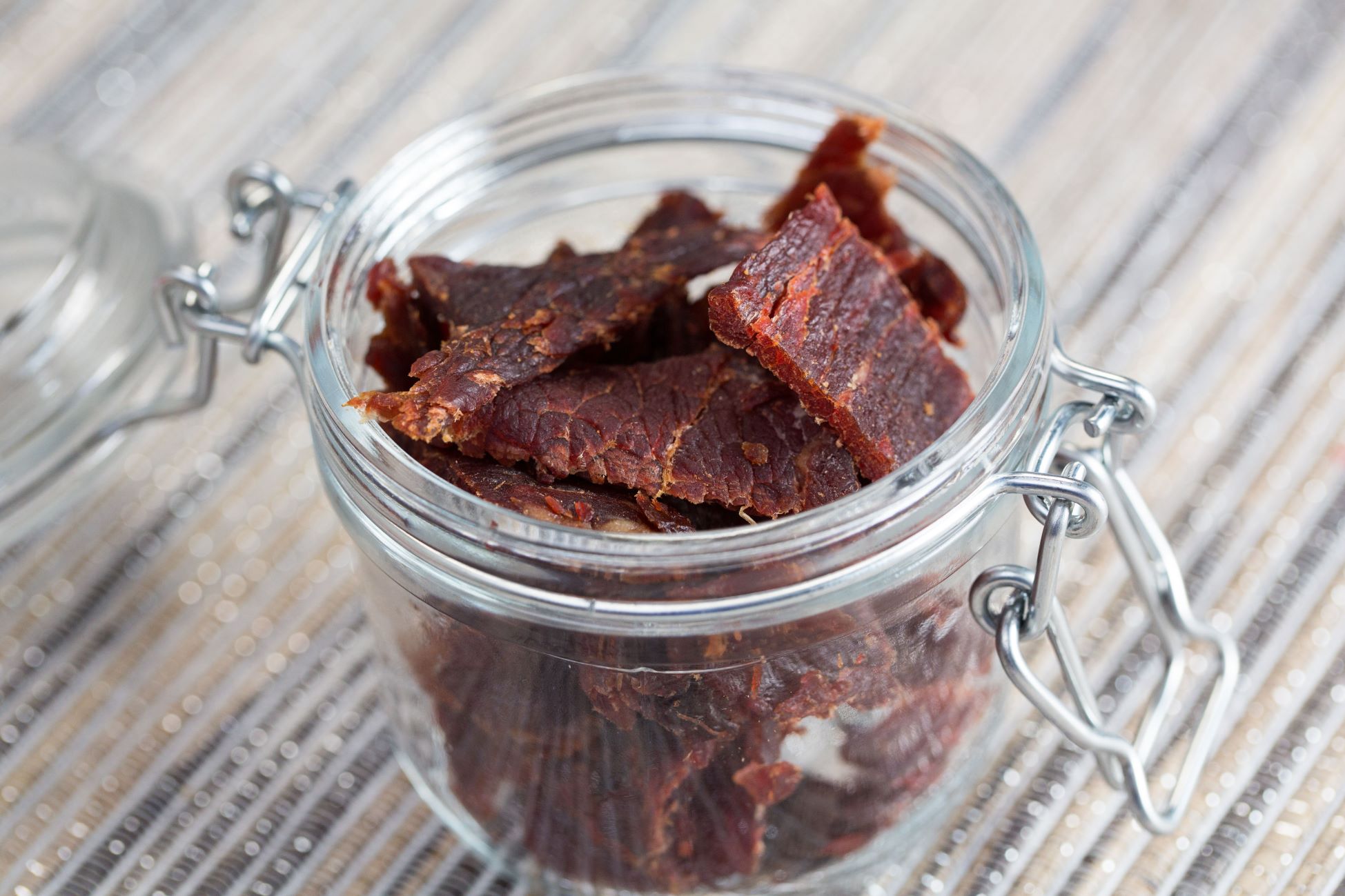
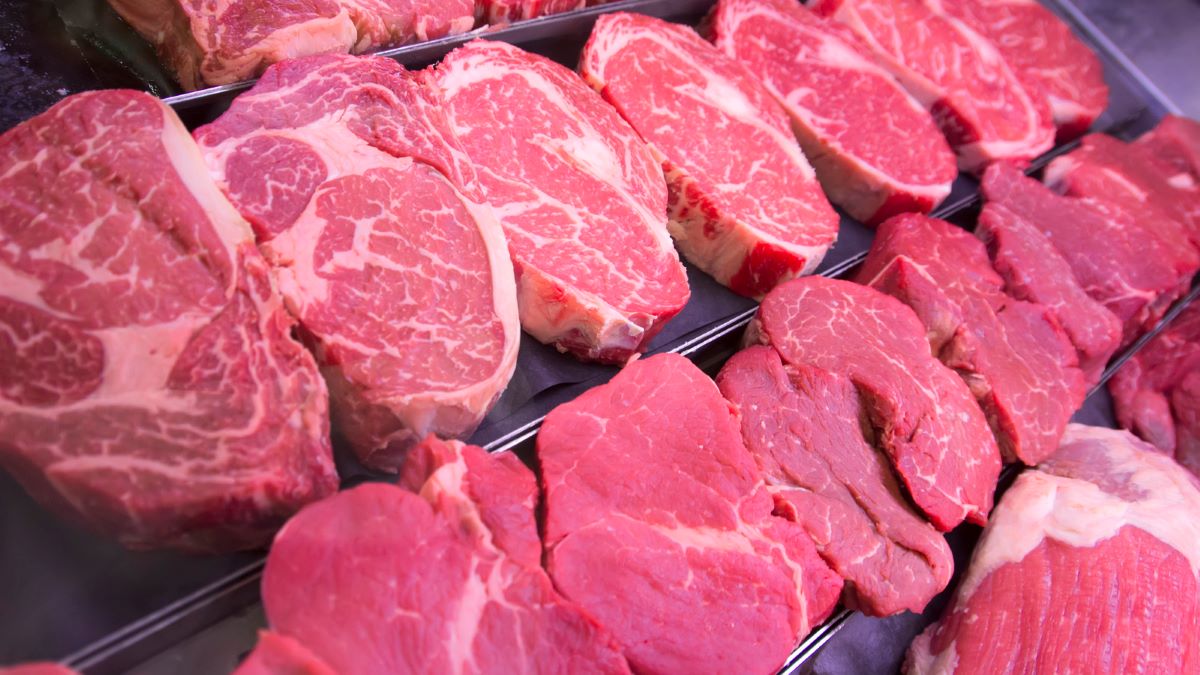
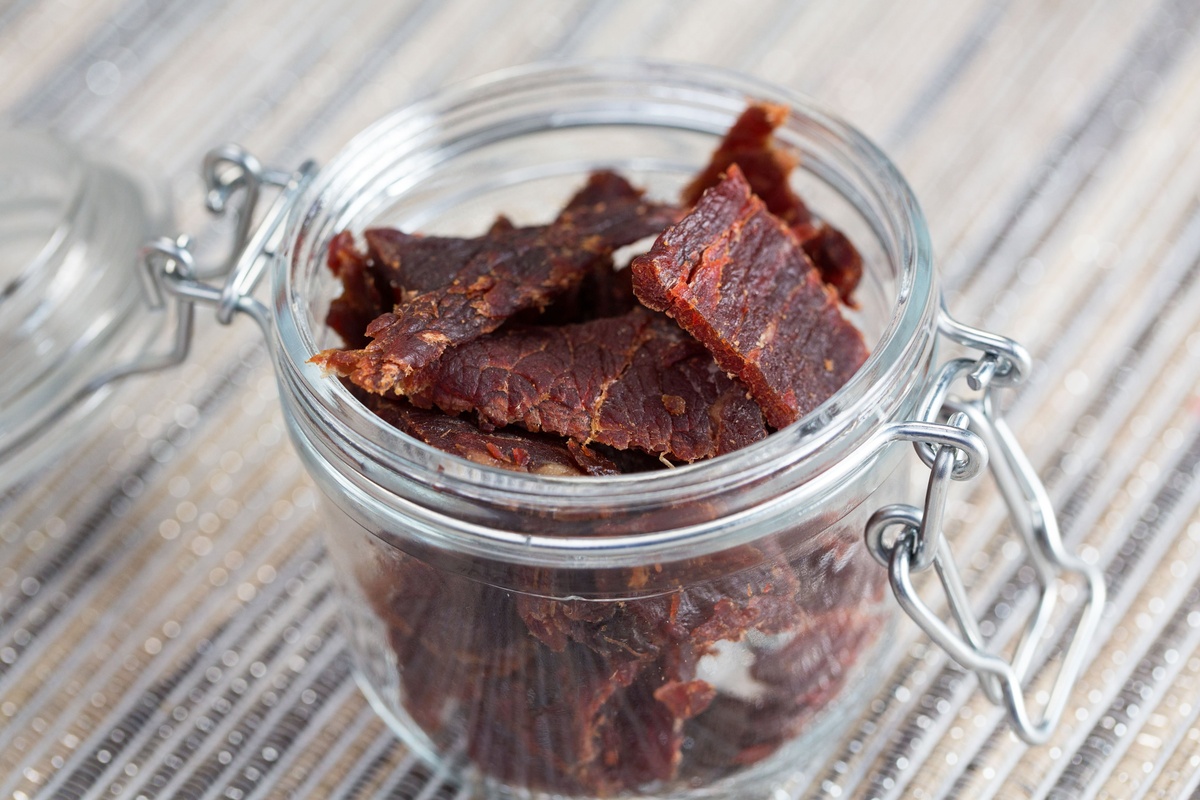

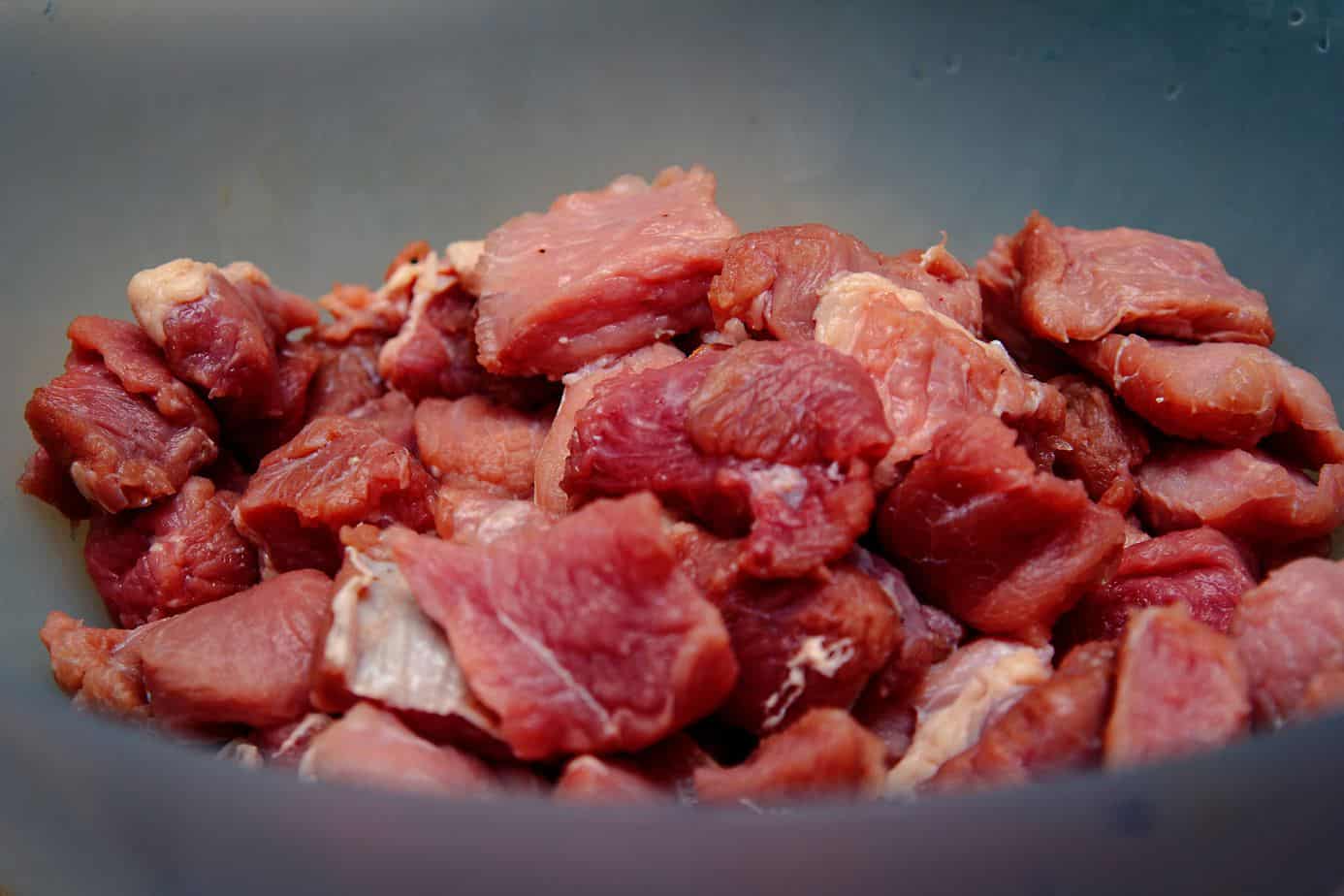
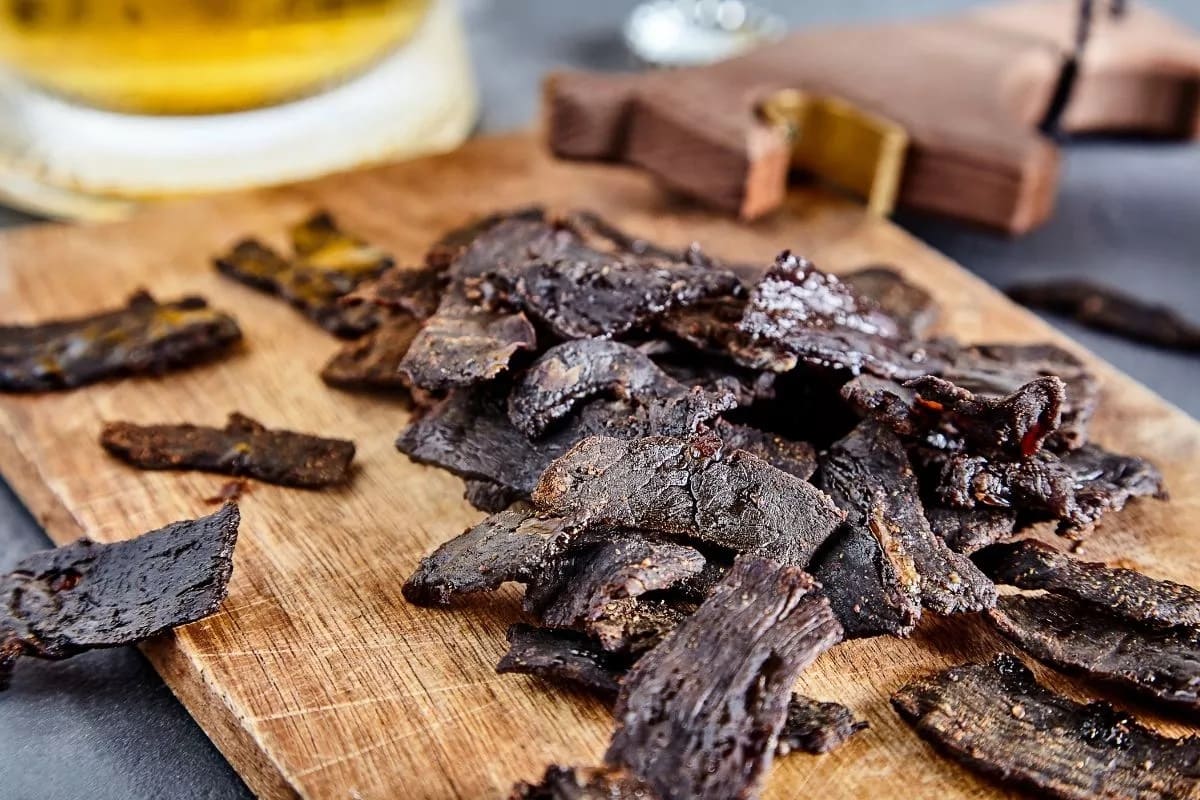

0 thoughts on “How To Store Beef Jerky”